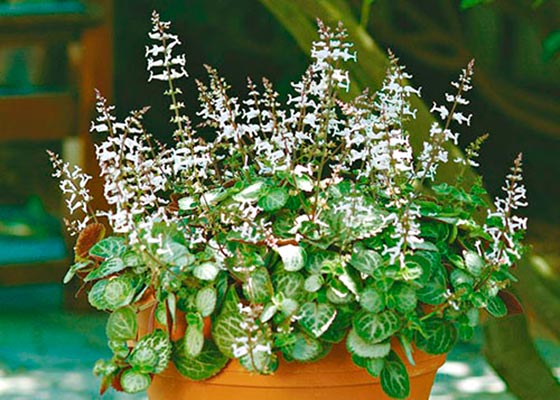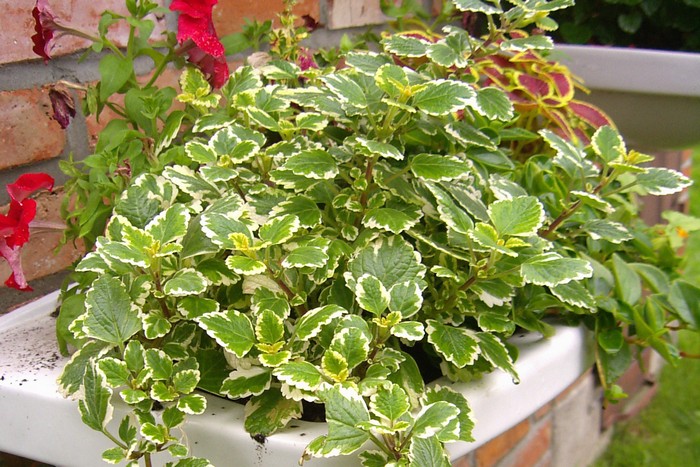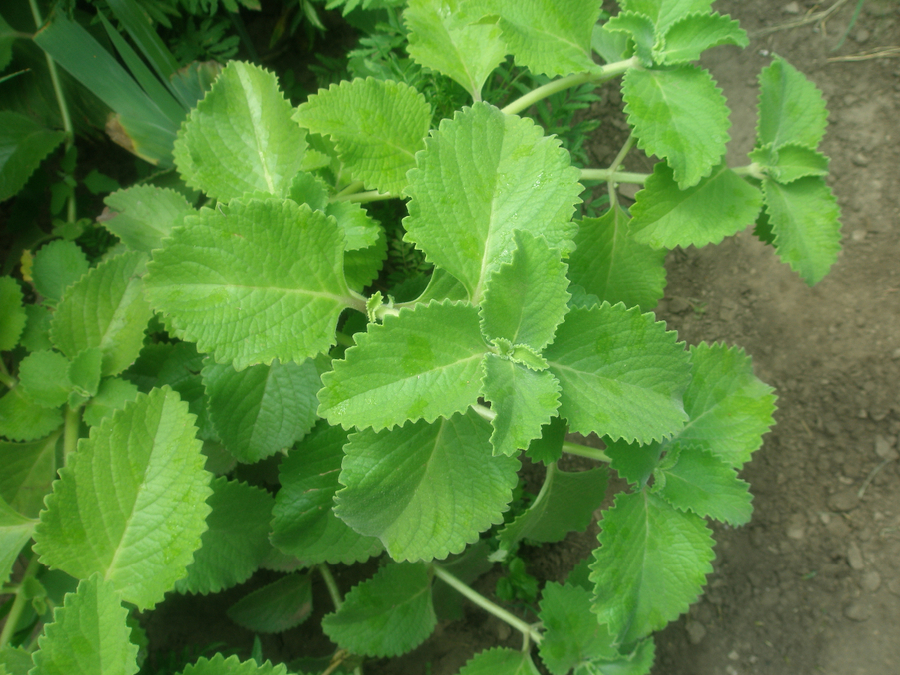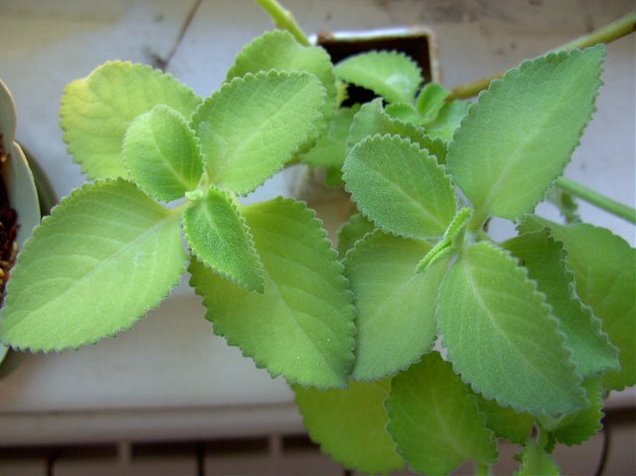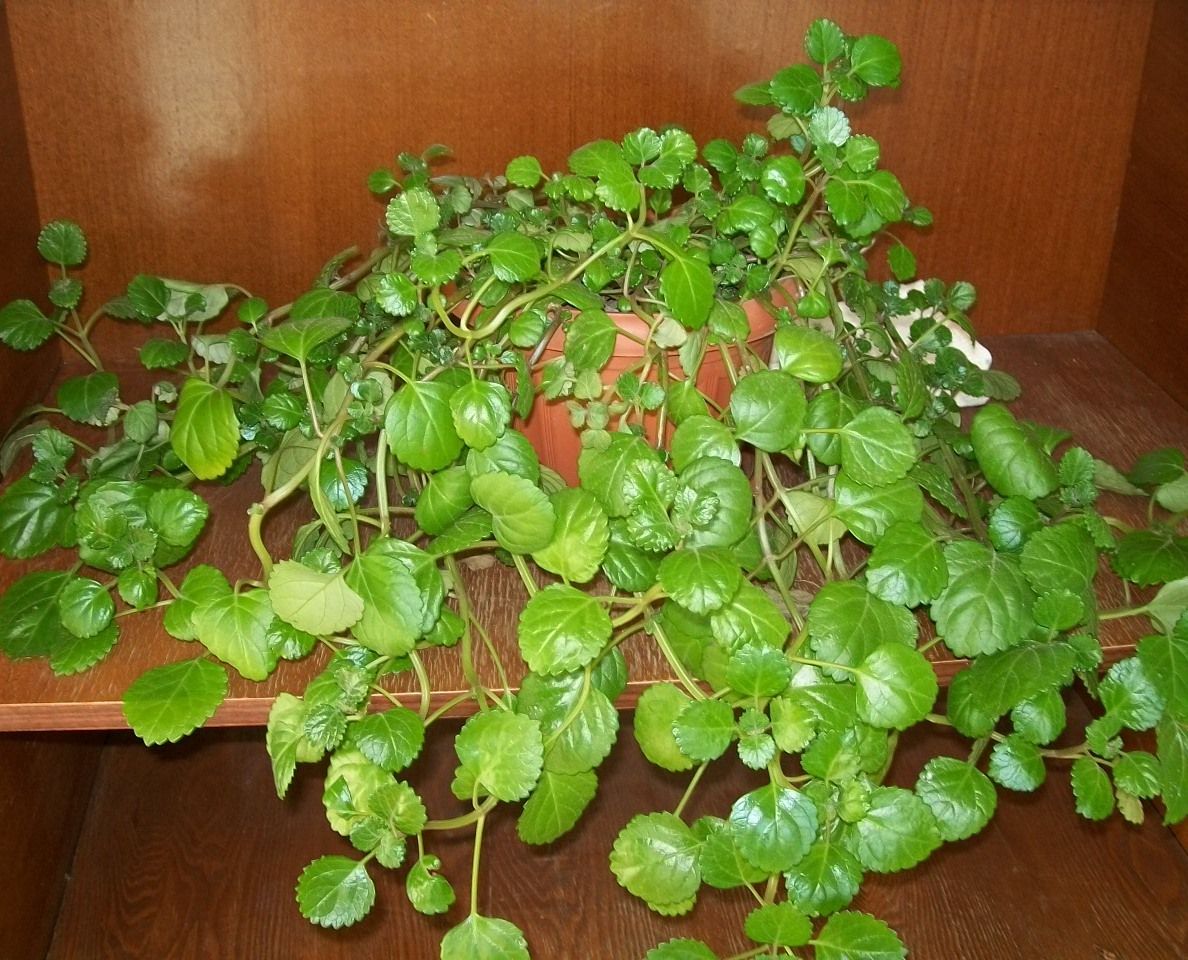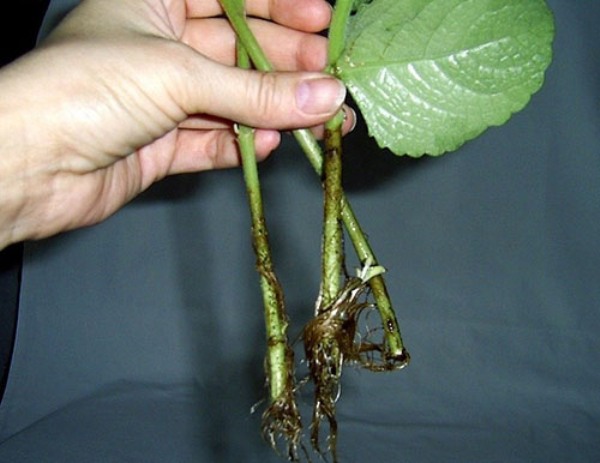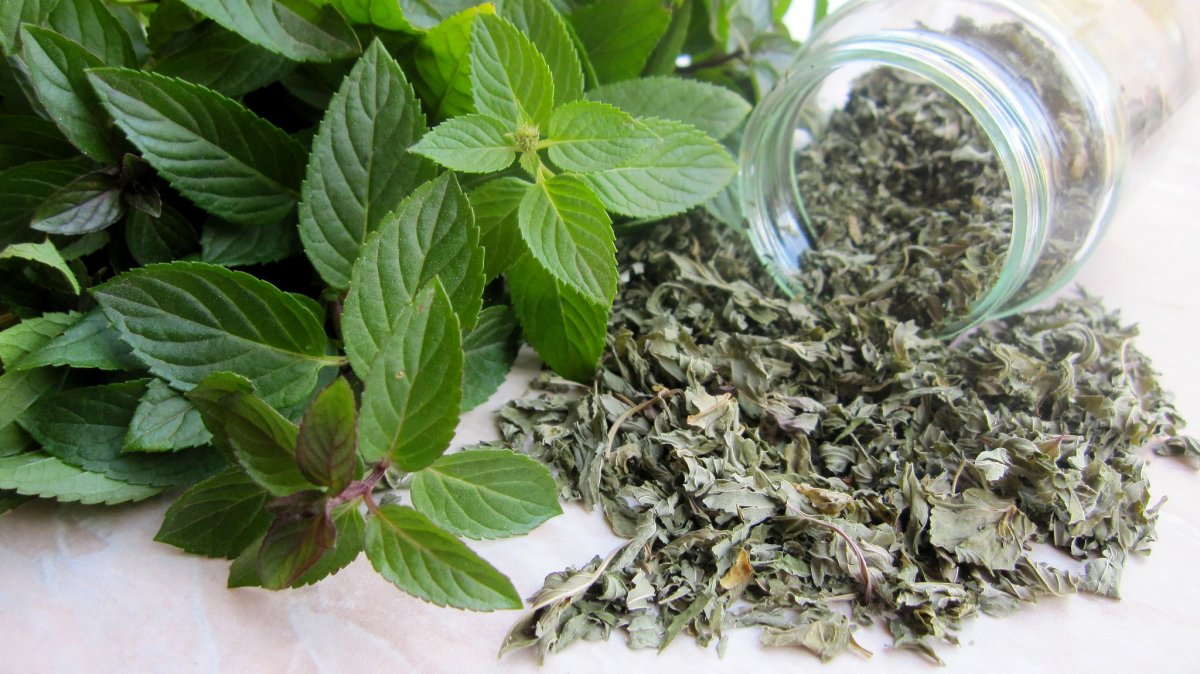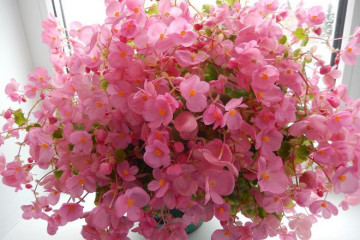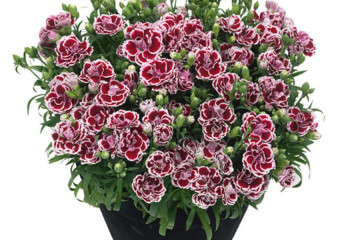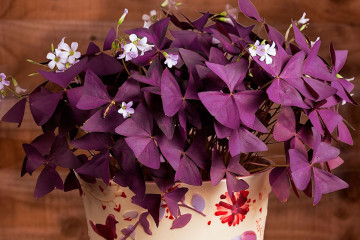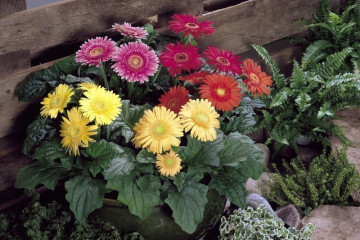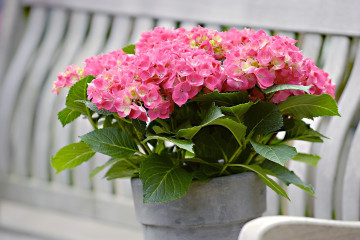Plectrantus (indoor mint) - home care
Content:
Plectrantus is an indoor mint species that is naturally endowed with an amazing, pronounced aroma. An evergreen plant, depending on the variety, can grow upward or creep along the surface of the soil. The decorative culture is widespread in New Zealand, Fiji and Australia. In our country, indoor mint is often grown indoors. By properly caring for a fragrant plant, you can grow healthy bushes that will delight you with an attractive appearance for a long time.
What does Plectrantus look like, which family does it belong to
Plectrantus (indoor mint) belongs to the category of herbaceous plants or evergreen shrubs, the height of which does not exceed 65-80 cm. The shoots of the culture are branched. They can not only grow up, but also creep along the soil surface. The fibrous type of root system is not located deep enough. Ribbed shrub stems can be glabrous or pubescent, depending on the variety.
The leaf plates are arranged on short petioles in a crosswise manner, in pairs. The egg-shaped foliage is fleshy. Its outer parts are covered with small denticles. On the surface of the green mass, you can see veins or a variegated pattern. The green mass contains aromatic glands, thanks to which an amazing smell emanates from the variegated plectrantus, which may contain spicy or mint notes.
You can admire the flowering during the summer months. Paniculate inflorescences are rather dense. They are located at the tips of the branches. Flowers of both sexes consist of 5 petals that grow together at the base into a tube. Two-lipped rims are painted in a different palette:
- white;
- lilac;
- blue;
- lavender;
- purple.
In the central part there are miniature stamens and an ovary. After the plectrantus has been pollinated, the ripening process of the fleshy fruits begins. In the inner part of the fruit there are 4 nuts. After ripening, the fruits open on their own. Growing and caring for mint is quite simple, the main thing is to adhere to the recommendations of specialists in the field of floriculture.
Popular varieties
There are over 250 varieties of roommint. Some of them do not look like mint at all in appearance. The most popular types:
- Coleoide Plectrantus belongs to the category of shrubs with erect shoots. Plant height can reach 95-100 cm. The surface of the ovoid foliage is shiny. Mint shoots are tetrahedral. Soft petioles and stem part is pubescent. The leaf plates are painted in a rich green palette. On the surface of the green mass, you can see white spots or stripes along the edges.
- Plectrantus Ertendal (oertendahlii) is a herbaceous perennial crop, the shoots of which spread along the surface of the soil. The height of the bushes reaches 40 cm. The ampelous plectrantus is distinguished by petioled opposite foliage, the length of which is within 6 cm. On the surface of the green mass, you can see silvery patterns that are located along the veins. In the lower part, the foliage is covered with red villi. In summer, racemose inflorescences begin to bloom on the upper parts of the shoots, the length of which does not exceed 30 cm.Each of the bells is painted in light purple tones or a white palette.
- Plectranthus Mona Lavender is a hybrid variety of upright shrubs, the stems of which are covered with a brown-brown skin. The egg-shaped foliage is colored green. The surface of the jagged green mass is glossy. The underside of the foliage is covered with purple villi. On the colors of the violet-blue tone, you can see blue dots. Indoor plectrantus acquires an attractive appearance during the flowering period.
- Plectranthus oak-leaved - a plant with fleshy erect stems covered with serrate and leathery foliage, the shape of which resembles the outlines of oak leaves. The green mass is colored in a dark green palette and is covered with short silvery hairs. Rubbing the foliage between your fingers, you can feel a pleasant, pronounced coniferous aroma. Caring for plectranthus is quite simple, so even beginners in the field of floriculture can grow it.
- Felt plectrantus belongs to the category of miniature bushes, the carved foliage of which is densely pubescent and painted in a light green palette. Drooping shoots. A pleasant mint aroma emanates from the foliage. The plant needs good lighting and systematic watering with settled rainwater.
- Southern plectrantus is an evergreen perennial that belongs to the category of herbaceous plants. Indoor mint can spread along the surface of the soil and thereby form a continuous large carpet. Burgundy stems, when grown in pots, hang down in a chic cascade. Glossy foliage of a rounded shape is painted in a green palette. The edges of the green mass are jagged. Numerous branched veins can be seen on the surface of the leaves. Peduncles are rather tall and leafless. Florists often refer to the southern variety as Swedish ivy.
- Plectrantus variegated - a kind of room mint, the leaf plates of which are painted in a gray-green palette. The extreme parts of each sheet are painted in light colors. During flowering, small white flowers form on the bushes. The variegated variety looks good when grown with pelargonium and surfinia, barbatus and golden mint.
Healing properties
Homemade mint (plectranthus) - can I use it? Fragrant plectrantus is endowed with useful properties by nature. With the help of tea made from room mint, colds, fever, and disturbances in the work of the gastrointestinal tract can be cured. The plant helps to cope with irritable bowel syndrome.
Infusions, which include the plectrantus flower, have a strong calming effect, which has a positive effect on the nervous system. People suffering from frequent nervous tension, anxiety and insomnia should drink an infusion that contains mint every night before going to bed. In addition, plectrantus is endowed by nature with choleretic properties, an expectorant effect.
Features of caring for a plant at home
Mint (plectrantus) must be planted in well-lit areas. However, in a hot period, it is important to shade the flowers a little from direct sunlight, which will make it possible to avoid burns of the leaf plates. The plant is most comfortable in the summer in partial shade. Additional illumination is required exclusively during the flowering period.
The temperature in the room in which the plectrantus plants grow should be in the range of 20-22 ℃ above zero. It is recommended to plant the bushes outdoors during the summer months. In winter, you can reduce the temperature to +18 ℃ and plant flowers in pots.
The plant is not demanding on the level of moisture.However, do not put containers with flowers near heating devices in winter, as the air is too dry in this place. It is recommended to spray the bushes daily and place the pots on pallets filled with damp pebbles.
Indoor mint needs an abundant and frequent soil moistening procedure. Drying of the topsoil by 1 cm deep will indicate the need for watering. You should not allow stagnation of water in pots, so as not to provoke rotting of the root system. Watering the flowers is necessary every 2 days. During the period of active growth, it is worth applying a complex fertilizer to the soil, which is intended for decorative deciduous crops.
In the cold season, top dressing is not applied to the soil. It is necessary to resume feeding in March in order to accelerate the growth rate of shoots. The lower part of the plant is exposed at the same time.
Features of winter care
Plectrantus does not need a rest period, which is why it makes no sense to create certain conditions in winter. If necessary, you can independently introduce flowers during the rest period. To do this, they stop feeding and reduce the frequency of soil moistening procedures. In this case, the room temperature can be reduced to +13 ℃.
Pruning
To maintain the attractive appearance of the crop, it is necessary to systematically prune. As a rule, this procedure is performed in the spring. Each of the shoots of the plectrantus is shortened by half. During the period of active growth, experts advise pinching the tips of the shoots, which helps to stimulate branching.
How plectrantus reproduces
Reproduction of room mint can be carried out by the method:
- cuttings;
- division of bushes.
To use the second method, you will need to dig out the bush and use a sharp shovel to divide it into a couple of parts so that the root system and shoots remain on each side. The resulting parts of the plant are planted in pre-prepared holes. It is necessary to shade the seedlings from direct sunlight, which will make it possible to avoid burns to the leaf plates.
For propagation by cuttings, you will need to cut stem branches from the mother bush, the length of which has reached 5 cm.For rooting, you should place the cuttings in a container filled with water. A few weeks after the roots form on the branches, they are planted in separate containers filled with humus, leaf and sod soil.
Transfer
A room mint transplant is carried out annually. Bushes over 5 years old can be replanted every 24 months. The procedure is performed in the spring. You can prepare the soil for transplanting yourself using:
- leafy ground;
- a small part of the sand;
- sod soil;
- humus earth.
The container for planting bushes must be deep so that the root system fits in the pot. The third part of the container is occupied by the drainage layer.
Diseases and pests
Among the main pests of plectrantus, it is worth highlighting:
- spider mite;
- aphids;
- whitefly;
- scabbard.
The invasion of insects occurs against the background of low humidity in the room where the pots of flowers are. To cope with pests, it is necessary to carry out an insecticidal treatment and expose the flowers to the open air for a couple of days.
Difficulties arising in the growing process must be addressed in a timely manner. This will prolong the life of the culture and will preserve its attractive appearance. Among the most frequent troubles that can occur in the process of growing plectrantus, it is worth highlighting:
- Withering of leaf blades. It is important to adjust the frequency of watering the soil.
- Burn-in and discoloration of foliage. The plant must be protected from direct sunlight.
- Powdery mildew damage often occurs against the background of an excess of moisture in the soil. A grayish bloom appears on the leaf plates. To cope with the disease, they are treated with fungicides.
Having familiarized yourself with the peculiarities of growing room mint, you can grow healthy bushes that will delight you with systematic flowering, and fill the room with a pleasant aroma of needles or spices.
